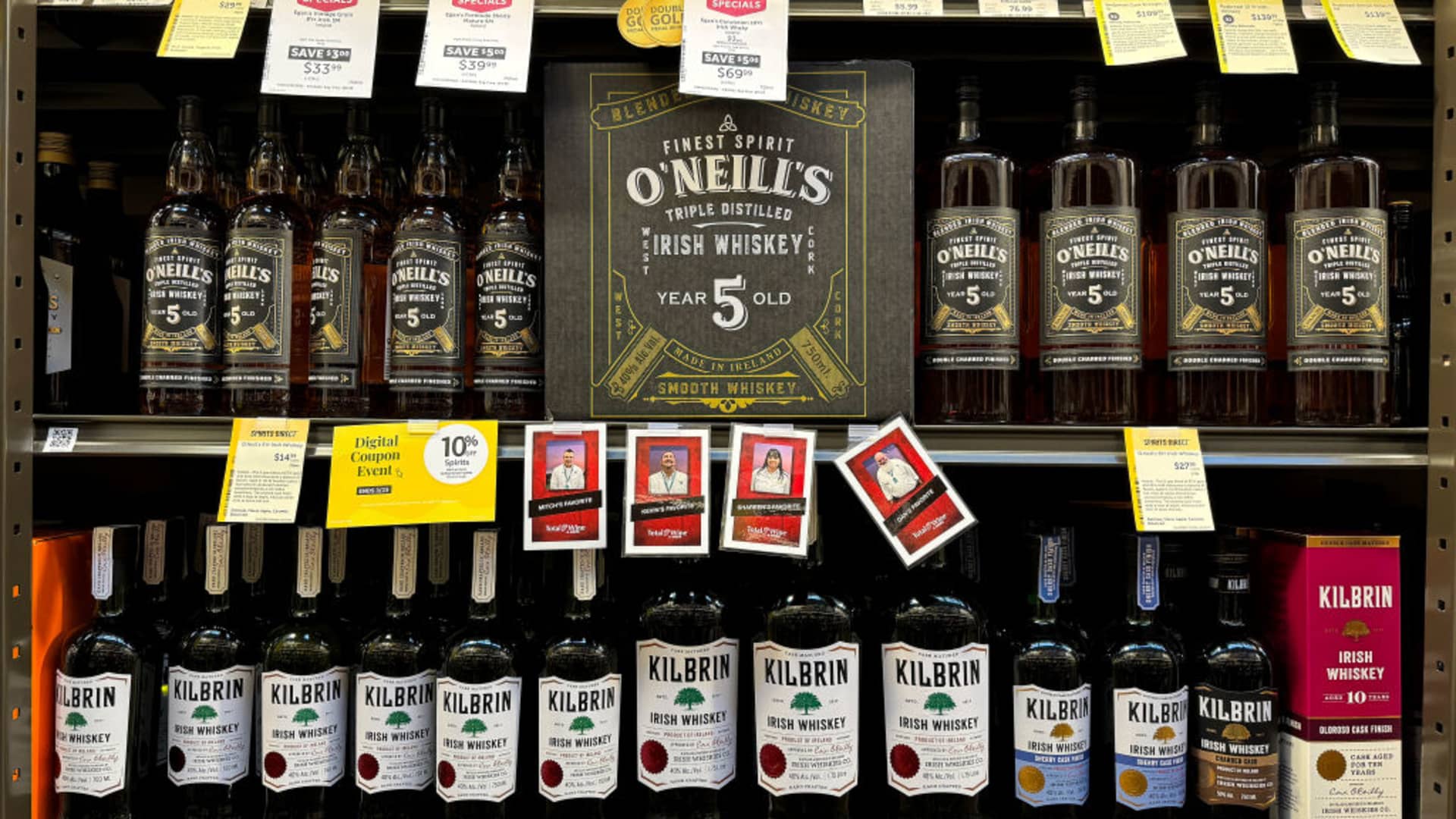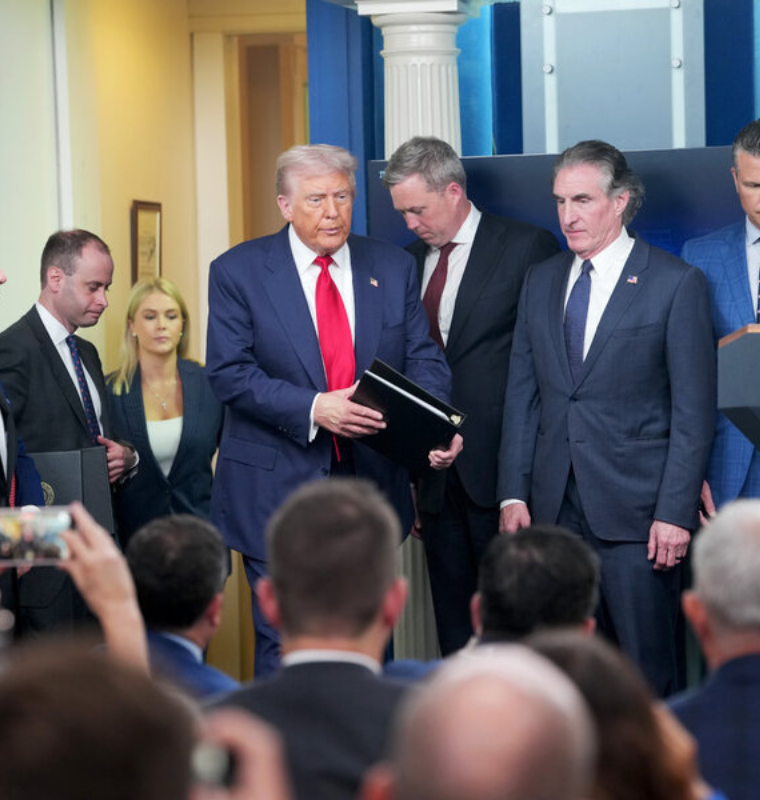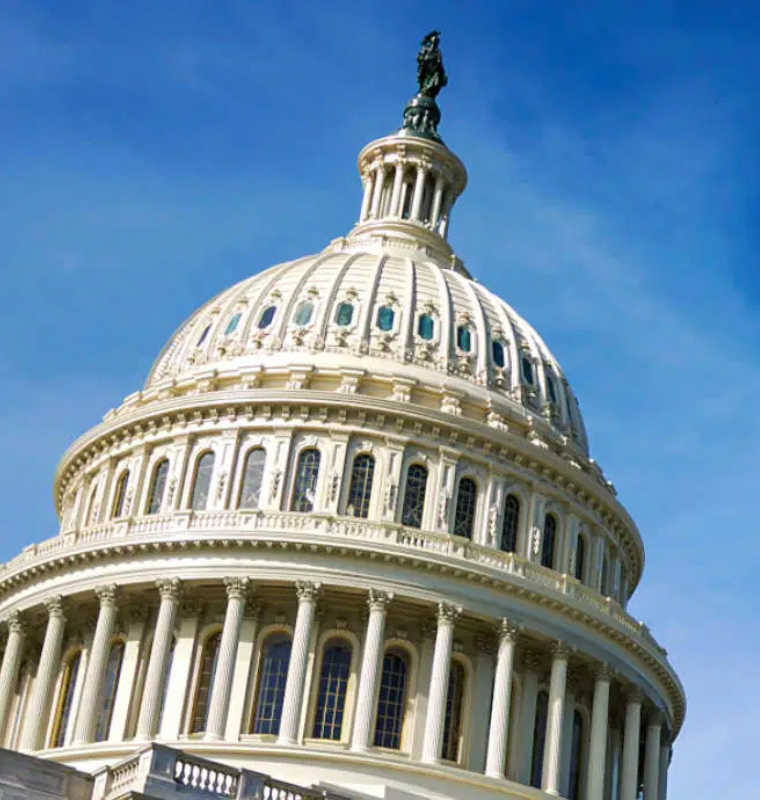Trump’s 30% Tariff Threat Shakes EU Exporters: ‘This Is Simply Unsustainable,’ Say Whiskey, Cheese Makers
Trump’s 30% Tariff Threat Shakes EU Exporters: ‘This Is Simply Unsustainable,’ Say Whiskey, Cheese Makers
By
Leah Rosenfeld
Last updated:
July 21, 2025
First Published:
August 6, 2025

Getty Images
Transatlantic Trade Tensions Escalate as 30% Tariff Looms Over EU Exports
The announcement of a sweeping 30% U.S. import tariff on European Union goods starting August 1 has ignited alarm across Europe’s manufacturing, food, and beverage sectors. Exporters from Ireland to Italy warn that the move could drive prices to unsellable levels in the U.S. and cause long-term damage to critical trade flows.
President Donald Trump’s administration argues the tariffs are needed to correct a €198 billion ($231 billion) goods trade imbalance with the EU, though European leaders counter that the broader trade picture — including services and investment — is far more balanced.
The clock is now ticking, with just days left to avert the tariff hike, after last-minute negotiations reportedly fell apart.
Whiskey, Cheese, and Liqueur: Iconic European Goods Under Pressure
For Skellig Six18, a boutique distillery on Ireland’s rugged west coast, the U.S. was always a key target market. The company began exporting premium Irish gin and whiskey in late 2023, after years of painstaking preparation. But according to founder June O’Connell, the tariff threats have upended that strategy.
“Warehouses are full, importers are saying don’t send any more, and only the biggest buyers are getting priority,” she told CNBC. “A 30% tariff would make U.S. pricing completely untenable.”
The 10% tariff already imposed in April has pushed final retail prices up by 20–25%, O’Connell said. A jump to 30% would likely cut sales in half.
Similarly, Franck Choisne, president of historic French distillery Combier, says the U.S. — which accounts for a quarter of its sales — has become a tough market. Known for its Triple Sec liqueur, a staple in margaritas, Combier is now facing dual pressure: rising tariffs and a weaker dollar, which further inflates the cost of EU imports.
“A 30% tariff, plus the currency shift, would make our products 45%–50% more expensive in the U.S. That’s simply not sustainable,” Choisne said. “We could see our sales volume in the U.S. cut in half.”
In Italy’s Lombardy region, Zanetti — one of Europe’s largest cheese exporters — has already raised U.S. prices by 25% in 2024 due to earlier tariffs and currency swings. CEO Attilio Zanetti fears a further hike will price their Grana Padano and parmesan cheeses out of American supermarkets.
“It’s creating chaos in our logistics and pricing strategy,” he said. “A 30% tariff would force a total rethink.”
Some Firms Shift Production — Others Can’t
In response to the uncertainty, some EU businesses are moving parts of their supply chain to the United Kingdom, which currently has a separate deal with a 10% baseline tariff. Others are relocating production directly to the U.S. to minimize disruption.
“We’re seeing German appliance manufacturers move final assembly to the U.K. just to shave off 20% in tariffs,” said Alex Altmann, partner at Lubbock Fine and VP of the British Chamber of Commerce in Germany.
Major industrial giants are also adapting. Siemens and Bosch have both publicly confirmed they are increasing U.S. production under “local-for-local” strategies. However, this flexibility isn’t universal.
For “protected origin” goods like Irish whiskey, French champagne, or Italian Parma ham, production legally cannot occur outside their country of origin.
“We simply can’t move our operations — the very nature of our product depends on where and how it’s made,” said O’Connell.
U.S. Consumers Could Also Feel the Impact
The effects of these tariffs will ripple beyond Europe. U.S. importers and consumers will ultimately pay the duties, with rising shelf prices expected across premium food and beverage categories.
Trade group FoodDrinkEurope warned the tariffs could “limit consumer choice and drive up costs” at a time when inflation is already pinching American households. U.S. producers — particularly bourbon makers — could also face EU retaliation, as they did in prior trade battles.
Can a Deal Be Reached in Time?
Hopes for a compromise remain slim but not dead. The U.K.’s deal with the U.S., which held baseline tariffs at 10% with sectoral carve-outs, is viewed as a potential model. However, recent reports suggest the Trump administration is pushing for minimum tariffs of 15–20% and is taking a harder line in EU negotiations.
“We understand Trump wants a more even trade balance,” said Choisne. “But at 30%, both sides lose. This will hurt not just small European exporters — but also American retailers, restaurateurs, and consumers.”
In the meantime, businesses like Skellig Six18 are scouting new markets in Asia, Latin America, and Africa — though expansion into these regions, they admit, is time-consuming and costly.
“In this business, patience is everything,” said O’Connell. “We’ve been distilling spirits for hundreds of years. This is just another storm we have to weather.”
Popular articles
Subscribe to unlock premium content
Disney’s Timeless Magic and How the Entertainment Giant Continues to Shape Culture and Innovation

Imran Khan’s Economic Missteps Amid Political Chaos in Pakistan

The Philippines’ Digital Shift How Remittances and BPO Are Fueling Growth

Disney’s Timeless Magic and How the Entertainment Giant Continues to Shape Culture and Innovation

Imran Khan’s Economic Missteps Amid Political Chaos in Pakistan

Disney’s Timeless Magic and How the Entertainment Giant Continues to Shape Culture and Innovation









